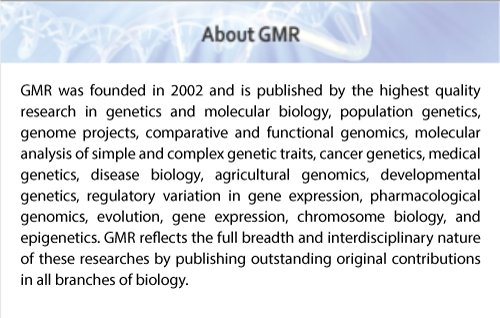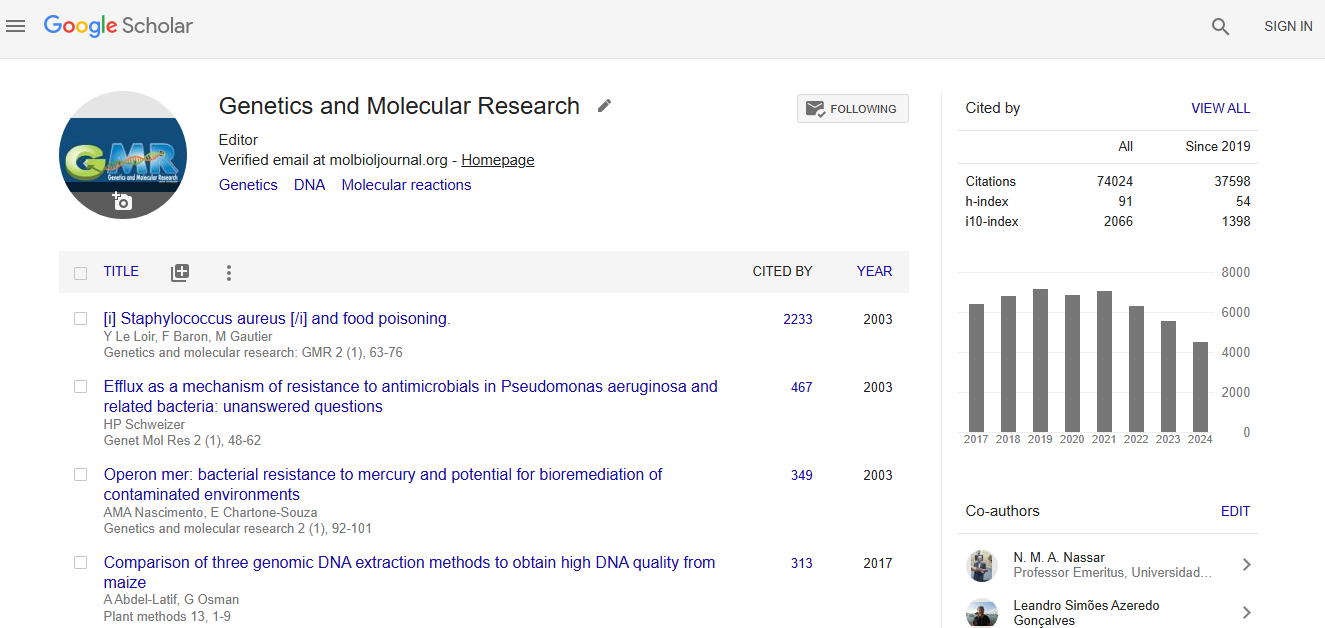Abstract
New compound heterozygous mutations of p. Thr101Ilefs*2 and p. Thr306Ale in a child from a Chinese family with 17�?±-hydroxylase/17, 20-lyase deficiency
Author(s): H. Xiao, H. Zhang, T. Li, D. Wu, L.T. Qin, T. Wang, B. Zhang and S.X. LiaoWe determined whether a child with 17a-hydroxylase/17, 20-lyase deficiency possessed the sex-determining region (SRY) gene, and examined the mutations present in the CYP17A1 gene that led to 17a-hydroxylase/17, 20-lyase deficiency. In the child, karyotype analysis was performed and polymerase chain reaction analysis and electrophoretic techniques were used to identify the SRY gene. A total of 50 normal individuals were included as a control group. Polymerase chain reaction and DNA sequencing were used to identify CYP17A1 gene mutations in all samples. The karyotype of the child was 46, XY, which was inconsistent with her social sex, SRY was positive, and a compound heterozygous mutation p. Thr101Ilefs*2 in exon 2 and p. Thr306Ale in exon 5 were identified in the CYP17A1 gene. These mutations were inherited from her parents. In the 20 normal individuals, these mutations were not identified. In the child, sex reversal may have been caused by CYP17A1 mutations. The compound heterozygousmutation of p. Thr101Ilefs*2 and p. Thr306Ale is a new gene mutation of 17a-hydroxylase/17, 20-lyase deficiency.
Impact Factor an Index

Google scholar citation report
Citations : 74024
Genetics and Molecular Research received 74024 citations as per google scholar report
